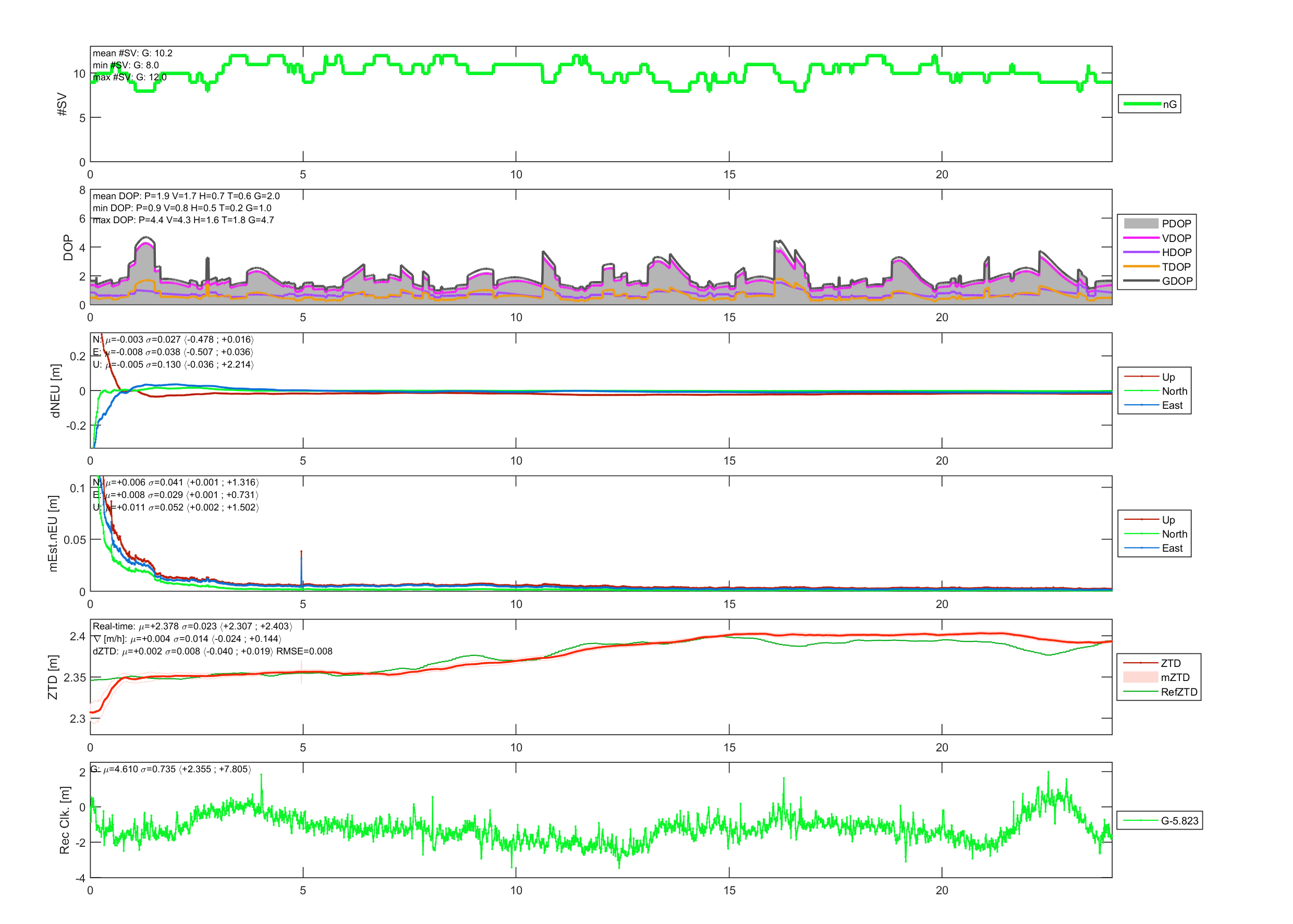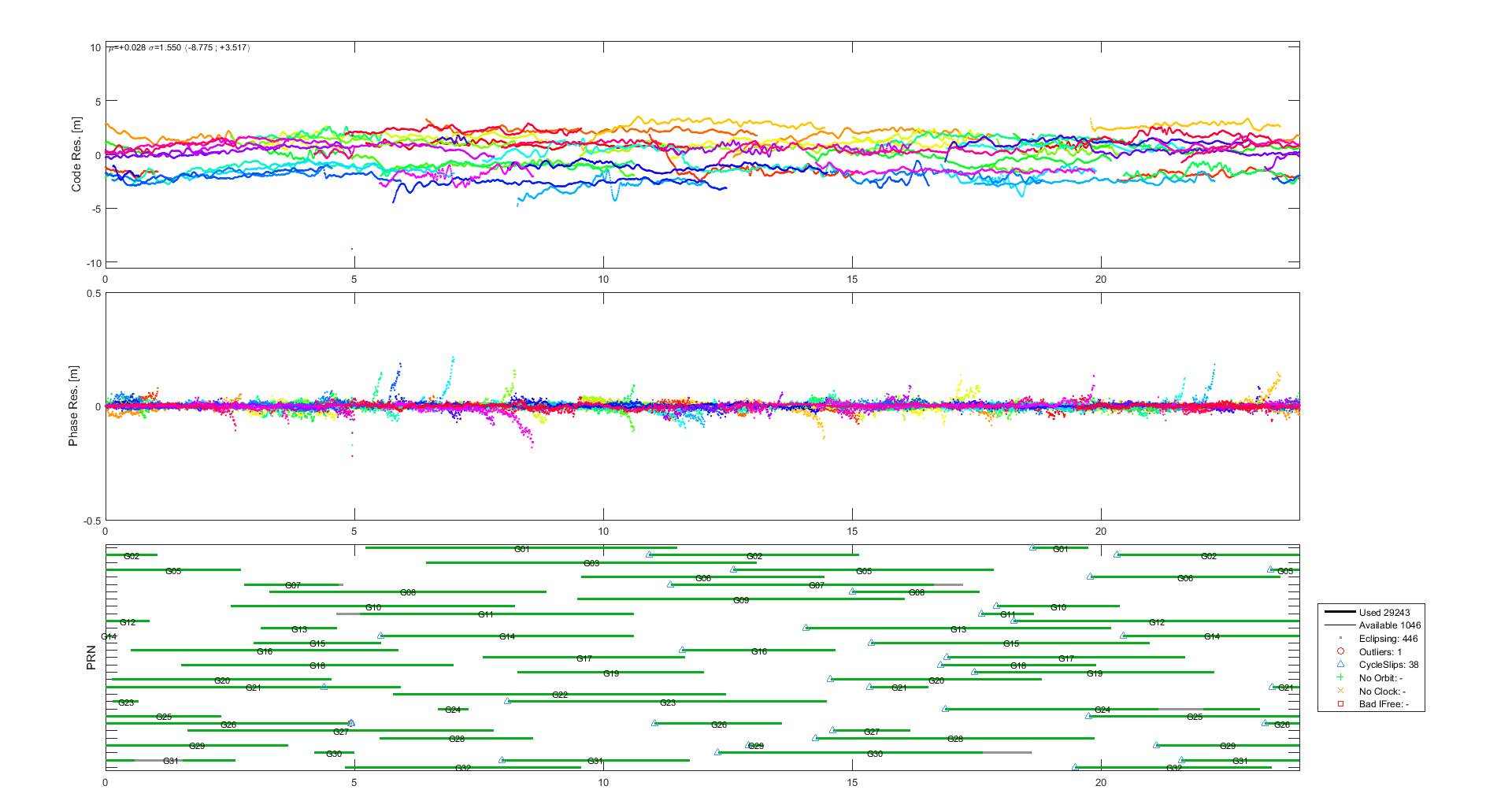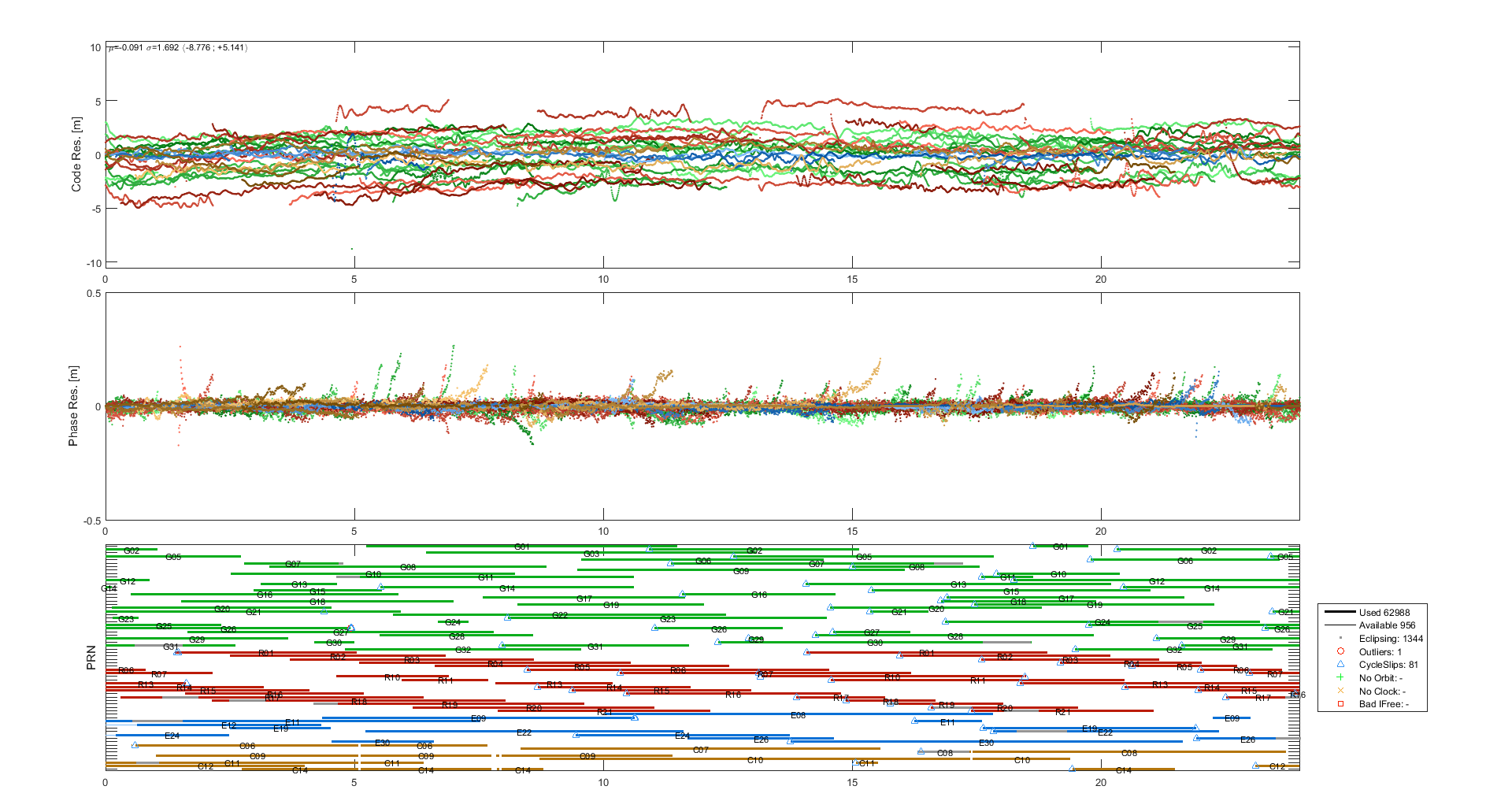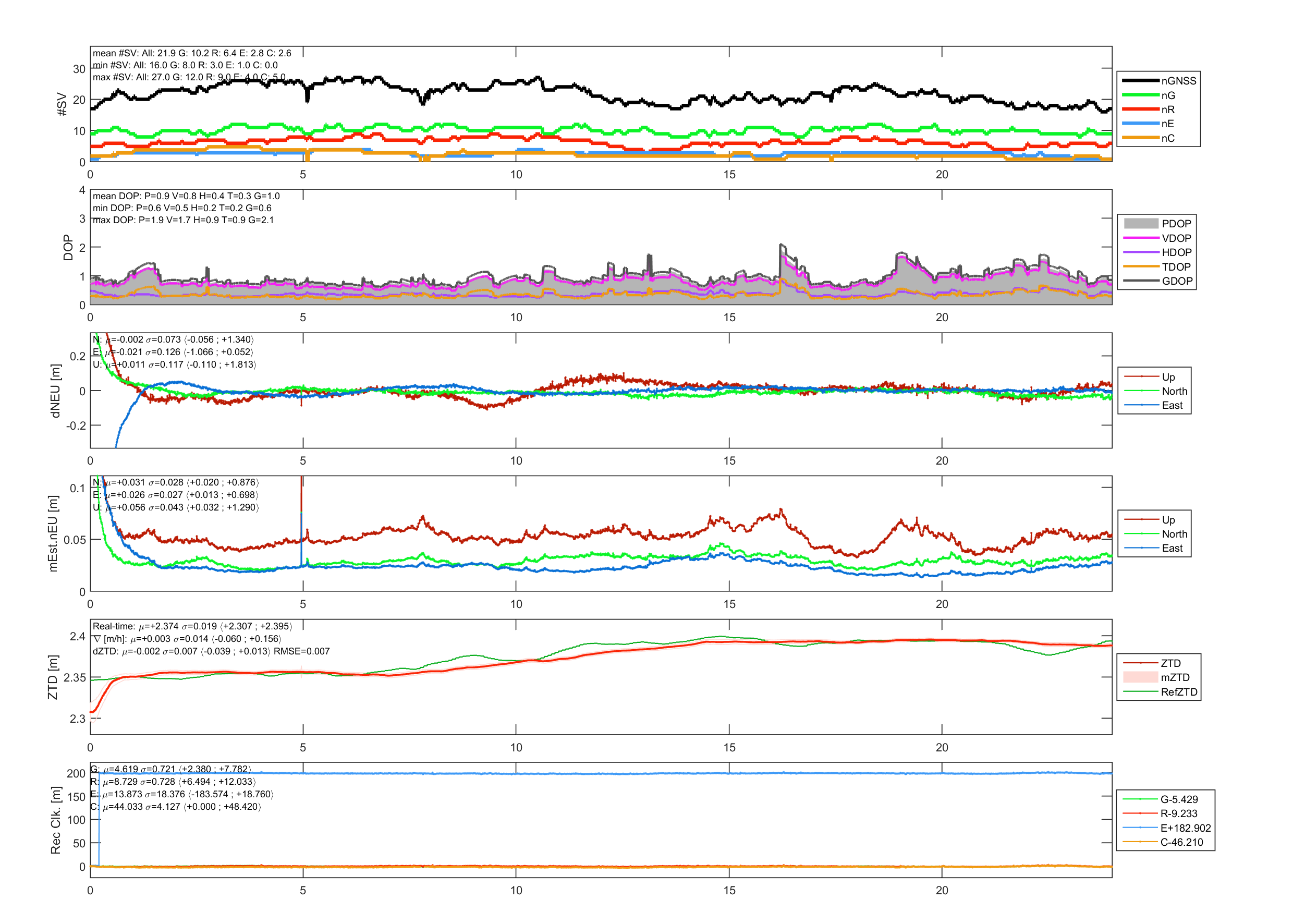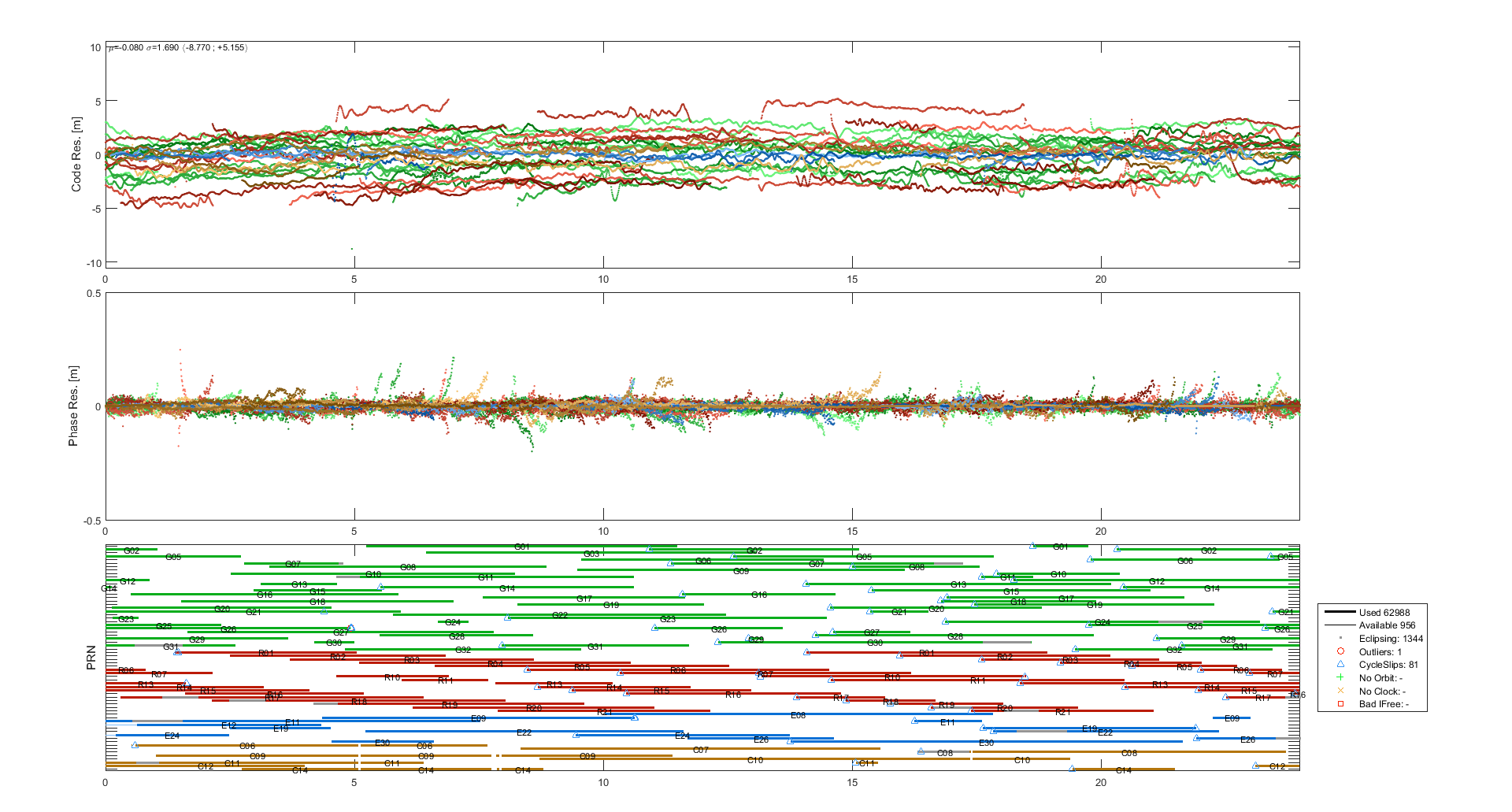Multi-GNSS
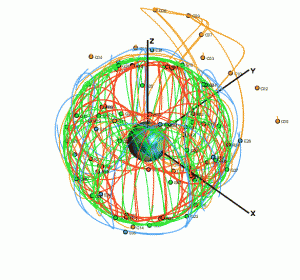 The constant development of GNSS, among which GPS, GLONASS, Galileo, BeiDou, QZSS and NAVIC can be distinguished, contributes to improvements in GNSS usage in areas desired by common users or in GNSS community. Such modernizations may help to obtain the accurate point coordinates not only by the number of satellites but also by a greater number of frequencies (Li et al., 2015). It may be possible even in difficult surroundings such as urban canyons,. By 2020, all new GNSS receivers will be multi-constellation capable, providing sound benefits for product innovation and achieving enhanced performance in many GNSS applications. Multi-frequency is already widely used by professional applications, with the mass market expected to follow (GSA, 2016). Currently the International GNSS Service (IGS) provides official precise orbits and clocks only for GPS and GLONASS but they intend to support the remaining systems (Dow et al., 2009). IGS Multi-GNSS experiment (MGEX) was established in order to provide precise products for full GNSS constellation (Montenbruck et al., 2014). Additionally, to satisfy real-time users IGS Real-Time Service (IGS-RTS) has been officially launched in 2013. IGS-RTS supports GPS and GLONASS only. Products provided for example by CNES can be used as an alternative for IGS-RTS as they support multi-GNSS constellation.
The constant development of GNSS, among which GPS, GLONASS, Galileo, BeiDou, QZSS and NAVIC can be distinguished, contributes to improvements in GNSS usage in areas desired by common users or in GNSS community. Such modernizations may help to obtain the accurate point coordinates not only by the number of satellites but also by a greater number of frequencies (Li et al., 2015). It may be possible even in difficult surroundings such as urban canyons,. By 2020, all new GNSS receivers will be multi-constellation capable, providing sound benefits for product innovation and achieving enhanced performance in many GNSS applications. Multi-frequency is already widely used by professional applications, with the mass market expected to follow (GSA, 2016). Currently the International GNSS Service (IGS) provides official precise orbits and clocks only for GPS and GLONASS but they intend to support the remaining systems (Dow et al., 2009). IGS Multi-GNSS experiment (MGEX) was established in order to provide precise products for full GNSS constellation (Montenbruck et al., 2014). Additionally, to satisfy real-time users IGS Real-Time Service (IGS-RTS) has been officially launched in 2013. IGS-RTS supports GPS and GLONASS only. Products provided for example by CNES can be used as an alternative for IGS-RTS as they support multi-GNSS constellation.
Our researches are focused on developing the methodology and algorithms for real-time precise positioning. In our works we aim at using all currently available GNSS. The efforts in the algorithms development area are materialized with GNSS-WARP software.
Dow J, Neilan R, Rizos C (2009) The International GNSS Service in a chang- ing landscape of global navigation satellite systems. J Geod 83(34):191198. doi:10.1007/s00190-008-0300-3
Li X, Dick G, Lu C, Ge M, Nilsson T, Ning T, Wickert J, Schuh H (2015) Multi-GNSS Meteorology: Real-Time Retrieving of Atmospheric Water Vapor From BeiDou, Galileo, GLONASS, and GPS Observations. IEEE Transactions On Geoscience And Remote Sensing. doi: 10.1109/TGRS.2015.2438395
Montenbruck O, Steigenberger P, Khachikyan R, Weber G, Langley R, Mervart L, Hugentobler U (2014) IGS-MGEX: preparing the ground for multi-constellation GNSS science. Inside GNSS 9(1):42-49.
European Global Navigation Satellite Systems Agency (GSA), 2016: GNSS user technology report.
Multi-GNSS
The constant development of GNSS, among which GPS, GLONASS, Galileo, BeiDou, QZSS and NAVIC can be distinguished, contributes to improvements in GNSS usage in areas desired by common users or in GNSS community. Such modernizations may help to obtain the accurate point coordinates not only by the number of satellites but also by a greater number of frequencies (Li et al., 2015). It may be possible even in difficult surroundings such as urban canyons,. By 2020, all new GNSS receivers will be multi-constellation capable, providing sound benefits for product innovation and achieving enhanced performance in many GNSS applications. Multi-frequency is already widely used by professional applications, with the mass market expected to follow (GSA, 2016). Currently the International GNSS Service (IGS) provides official precise orbits and clocks only for GPS and GLONASS but they intend to support the remaining systems (Dow et al., 2009). IGS Multi-GNSS experiment (MGEX) was established in order to provide precise products for full GNSS constellation (Montenbruck et al., 2014). Additionally, to satisfy real-time users IGS Real-Time Service (IGS-RTS) has been officially launched in 2013. IGS-RTS supports GPS and GLONASS only. Products provided for example by CNES can be used as an alternative for IGS-RTS as they support multi-GNSS constellation.
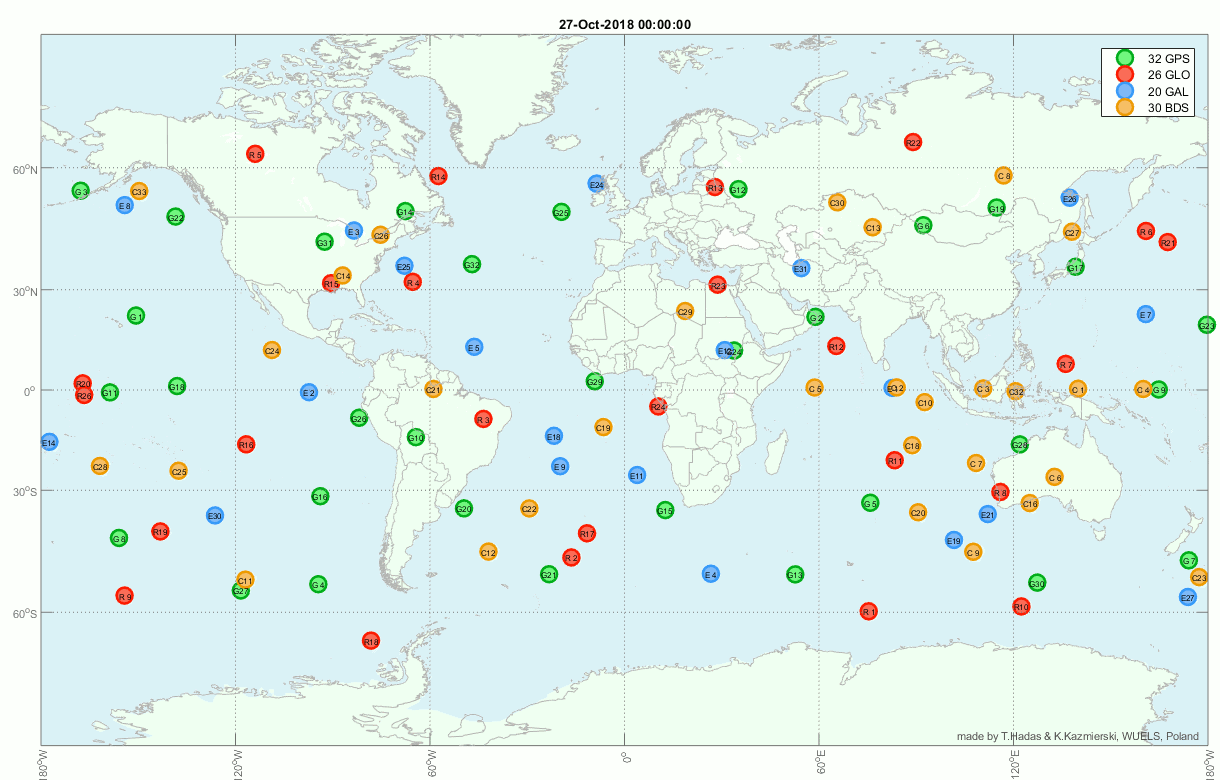
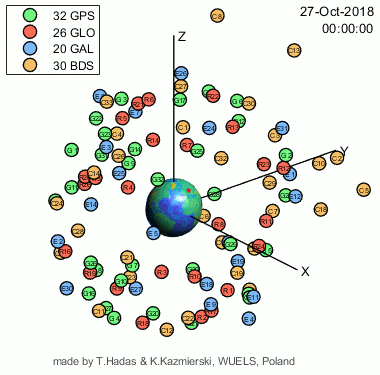
Our researches are focused on developing the methodology and algorithms for real-time precise positioning. In our works we aim at using all currently available GNSS. The efforts in the algorithms development area are materialized with GNSS-WARP software.
Dow J, Neilan R, Rizos C (2009) The International GNSS Service in a chang- ing landscape of global navigation satellite systems. J Geod 83(34):191198. doi:10.1007/s00190-008-0300-3
Li X, Dick G, Lu C, Ge M, Nilsson T, Ning T, Wickert J, Schuh H (2015) Multi-GNSS Meteorology: Real-Time Retrieving of Atmospheric Water Vapor From BeiDou, Galileo, GLONASS, and GPS Observations. IEEE Transactions On Geoscience And Remote Sensing. doi: 10.1109/TGRS.2015.2438395
Montenbruck O, Steigenberger P, Khachikyan R, Weber G, Langley R, Mervart L, Hugentobler U (2014) IGS-MGEX: preparing the ground for multi-constellation GNSS science. Inside GNSS 9(1):42-49.
European Global Navigation Satellite Systems Agency (GSA), 2016: GNSS user technology report.

